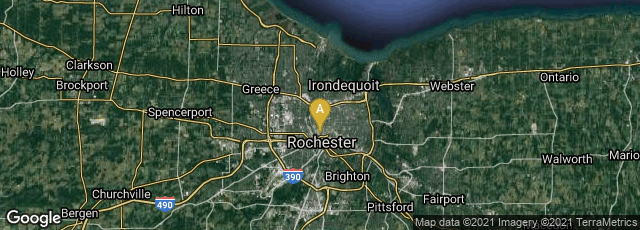

A: Rochester, New York, United States
In 1889 inventor and entrepreneur George Eastman of Rochester, New York used Cellulose Nitrate as a base for photographic roll film. Cellulose nitrate was used for photographic and professional 35mm motion picture film until the 1950s, eventually creating one of the most dramatic problems in the preservation of media.
"It is highly inflammable and also decomposes to a dangerous condition with age. When new, nitrate film could be ignited with the heat of a cigarette; partially decomposed, it can ignite spontaneously at temperatures as low as 120 F (49C). Nitrate film burns rapidly, fuelled by its own oxygen, and releases toxic fumes.
"Decomposition: There are five stages in the decomposition of nitrate film:
"(i) Amber discolouration with fading of picture.
"(ii) The emulsion becomes adhesive and films stick together; film becomes brittle.
"(iii) The film contains gas bubbles and gives off a noxious odour
"(iv) The film is soft, welded to adjacent film and frequently covered with a viscous froth
"(v) The film mass degenerates into a brownish acrid powder.
"Film in the first and second stages can be copied, as may parts of films at the third stage of decomposition. Film at the fourth or fifth stages is useless and should be immediately destroyed by your local fire brigade because of the dangers of spontaneous combustion and chemical attack on other films. Contact your local environmental health officer about this.
"It has been estimated that the majority of nitrate film will have decomposed to an uncopiable state by the year 2000, though archives are now deep-freezing film."